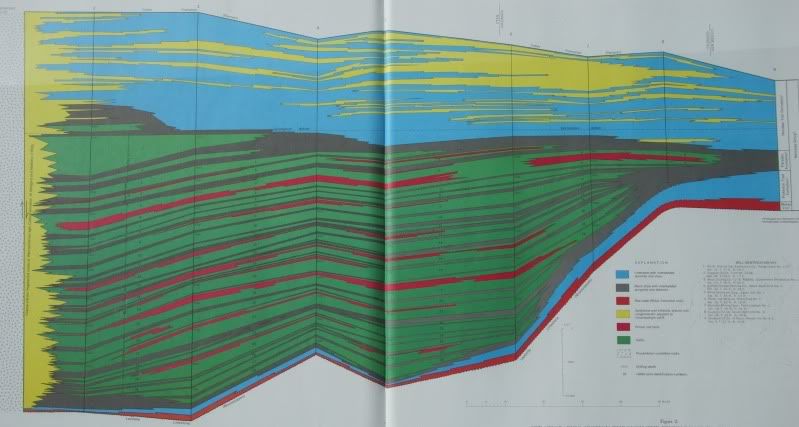
As you can see the pattern of deposition is always shale during stages of furthest transgression, followed by evaporite rock forming until the last of the potash dried. Glaciation is believed to have subsided from time to time and the basin or salt flat would have recharged. My main issue with this stratigraphy, given the near certainty that recharge must have occurred, is that the highly soluble potash top layer should have by all accounts been dissolved when the area was recharged. We also see slight layers of halite before any shale is put down which would have capped the potash and kept it in place. If the recharge really did come from glacial melting, why does this recharge water not pick up the evaporites faster than it caps them with shale?
From the 28 cycles of halite we see in the sequence, our class determined that the rate of deposition for the evaporite and shale layers averaged around 0.1 mm/year (well within believable bounds considering modern deposition rates). The glacial cycles also match historic trends well (not our current outlier, but previous cycles of ice ages) so the resurgence of glacial water was a dependable factor.
The deep valley/basin model some suspect formed the deposits would have provided (in my mind) enough water to dissolve the evaporites without having a deep enough water column to worry about temperature preventing uptake of evaporite sediment. A salt pan model seems like a better candidate to me, but even that seems unlikely given the extant of the evaporite deposits, which can be pretty sizable.
I was already excited to see some of the salt tectonics of Paradox Basin in person when our class goes to visit the Colorado Plateau this summer. Now, after our teacher has introduced some features that could have placed that salt, I'm more interested to learn about current theories of what was happening in that part of the world that we now have these wonderful deposits of salt to consider. It also makes me wonder what other curious oddities nature has hidden in remote locations of our planet, waiting to puzzle us and earn a namesake to remind us that not so long ago we thought we had most of the basics down...
Photo Credit
Hite and Liming. "Pennsylvanian Stratigraphy of Paradox Basin"


No comments:
Post a Comment